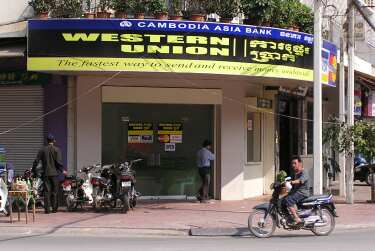The ‘International Symposium on South/South Migration: Opportunities, Risks and Policy Imperatives’ was hosted at the University of Queensland on 15 April – a joint initiative between the School of Social Science, University of Queensland, and the Griffith Asia Institute.
South/South migration is a relatively new phenomenon. Historically, the flow of migration between Global North (developed) and Global South (developing) began taking place immediately after the WWII. In recent years the demand for unskilled and semi-skilled workers has grown in emerging middle income nations in Southeast Asia, and in oil rich nations in the Middle East. This growing demand has driven an increase in migration from the developing nations in South and Southeast Asia, and parts of South America and Africa.
The Symposium discussed issues within the framework of South/South migration, and emerging trends in international migration with presentations from key local and international academics, advisers, and practitioners. The nexus of migration, remittance, investment and development within South/Southeast Asia has implications for migrant households and communities, including impacts on poverty, changing dynamics of livelihoods, gender and household relations, and social and environmental costs at the household and community level.
According to the UN, migrants (persons working outside their country of birth) constitute more than 230 million people (2013), of which 34% are moving South/South. This movement effects economic cash flows as migrant workers send money transfers back to families in their home country. In one 2013 count, six Asian developing countries were among the top ten cash-transfer receiving countries. In this count Bangladesh received more than $16 billion of remittances (cash transfers) from its migrant workers, most originating in countries south of the equator.
“One can detect four waves of migration taking place over the last half a century between North/South and South/South countries. In the latest wave, late 20th and early 21st century, the growth in South/South migration has been phenomenal” said Associate Professor Mozzaem Hossain, from the Griffith Asia Institute.
“Since 2000 the growth in the volume of international remittance has been spectacular. Between 2000 and 2008, according to World Bank, the total volume of remittances of all developing countries increased from US$81.3 billion to US$324.8 billion. There were six Asian developing countries among the top ten recipients in 2013 and has been growing. These resulted in adding to increased foreign exchange reserve of these nations in turn making strong contribution to the macroeconomic stability” said Associate Professor Hossain.
The key issues addressed in this symposium were:
(i) the extent to which migration and remittances are solutions to ‘development’,
(ii) the extent to and ways in which the migrants contribute to the economic growth of the sending countries through remittance and are linked to the myriad of social costs (and benefits) that migration entails,
(iii) given that migration — especially South/South migration that occur under unique conditions — will sustain as a source of development financing and an important livelihood option for households and communities of sending countries and (iv) the issues of safety, security and income of migrants in receiving countries are of paramount importance.
Key presenters included Ms Yuko Hamada, Senior Migration and Development Specialist, from the International Organisation for Migration (IOM), Bangkok, Thailand; Dr Amina Maharjan, Migration and Livelihood Specialist, from the International Centre for Integrated Mountain Development, Kathmandu, Nepal (via skype); Mr Md. Samsul Hoque, a Bangladesh government official (via skype) with Dr Moazzem Hossain; and Mr Munshi Israil Hossain, Assistant Professor at the University of Rajshahi, Bangladesh (via skype) with Dr Patricia Short and Adjunct Professor M Adil Khan.
“Remittance is a product of international labour migration. According to World Bank, amount of remittance was recorded at US$435 billion in 2014. Despite this volume of remittance, migrant workers have little access to safe and secure environment in countries of destination. These are often seen South to South corridors of migration. It is time now to investigate the safety, security and legitimate income issues of migrants in destinations of the Global South” said Ms Yuko Hamada of the Bangkok based International Organisation for Migration.
The papers presented in the symposium will be included in an edited volume currently in contract with Routledge publishing to be published in early 2016. The editors are: Dr Patricia Short, Professor (Adjunct) M Adil Khan of the School of Social Science, University of Queensland and Associate Professor Moazzem Hossain of Griffith Asia Institute.
